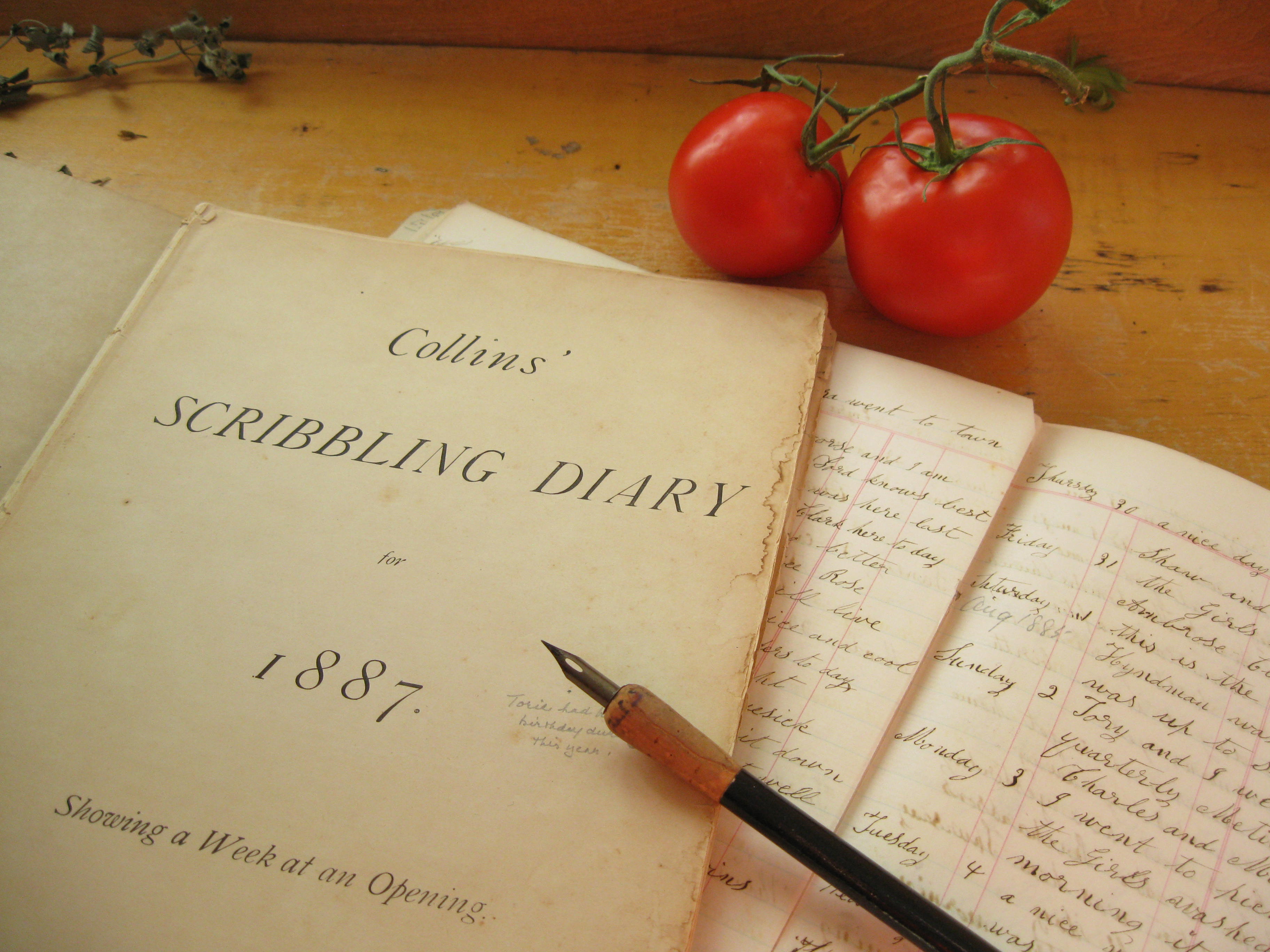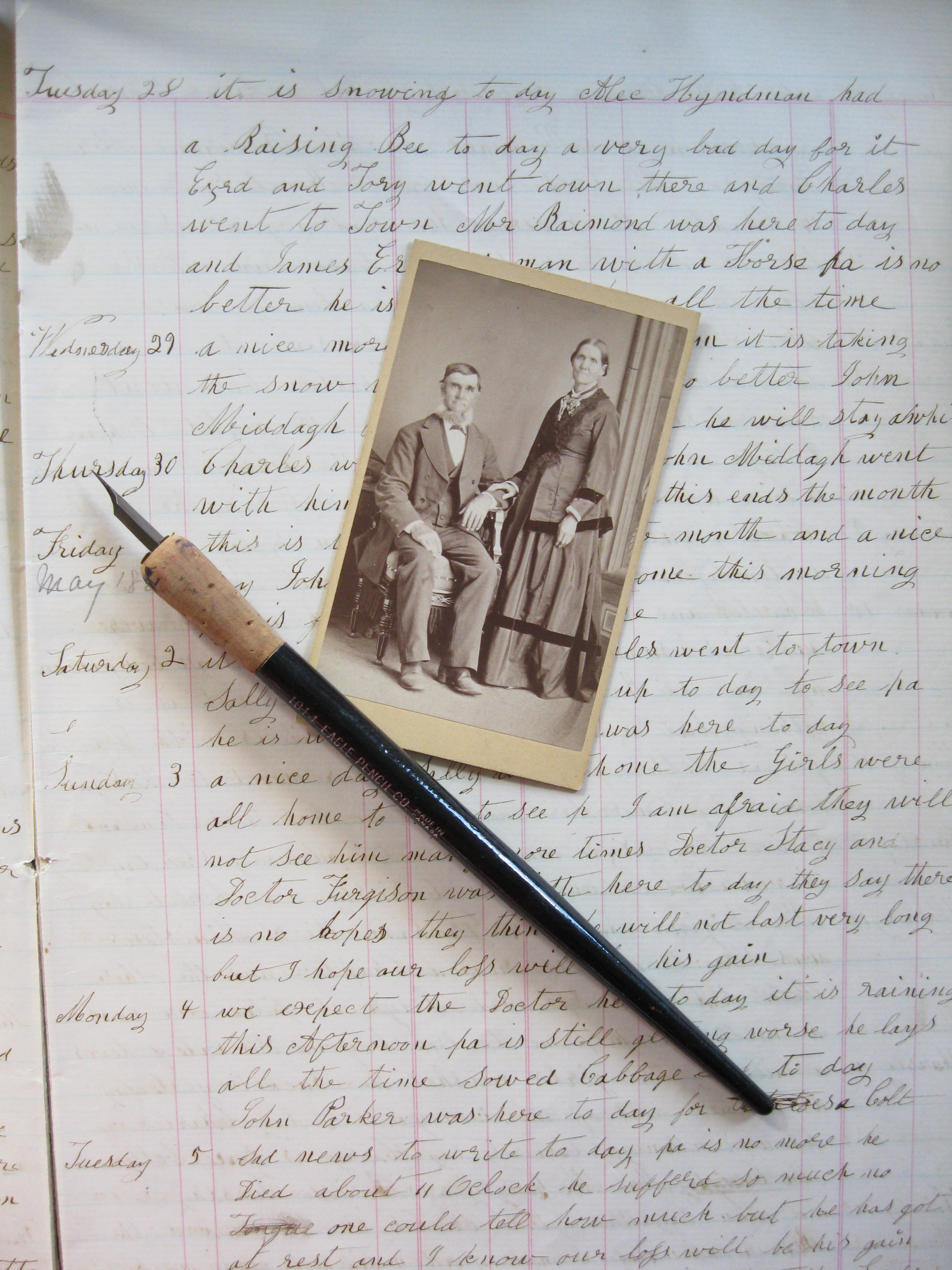
In honor of the upcoming thirty-fifth anniversary of Joan M. Jensen’s publication of her landmark collection of primary documents,With These Hands: Women Working on the Land (1981), the Rural Women’s Studies Association sponsored a roundtable highlighting innovative uses of primary sources for studying rural women at the 2015 annual meeting of the Agricultural History Society in Lexington, Kentucky. This panel showcased recent research and discussed the unique sources employed to investigate the diversity of women’s experience in the rural United States and Canada. Today we are featuring the work of one of those accomplished scholars (and RWSA co-chair), Catharine Wilson . Stay tuned for future installments in this series, “Sources in Rural Women’s History.”
WITH THESE HANDS They Wrote Diaries:
Analyzing the Keeping and Daily Entries of Farm Women’s Diaries
By Catharine Anne Wilson, University of Guelph
In “With These Hands” Joan Jensen stated that diaries bring us “as close as possible to the first-hand thoughts and feelings” of farm women. Several years ago Mother gave me my great-great-grandmother’s diary and it has become a family treasure and scholarly inspiration. With dip-pen in hand, Lucy Middagh wrote daily entries from 1884 until 1892 when her hands were too riddled with arthritis to continue. These diaries reflect her identity as an Ontario farm woman and mother of six sons and five daughters. When she died, her children inherited the diaries. The originals and copies dispersed across North America and to Australia wherever descendants settled. Lucy’s diaries have now been reunited thanks to the current generation of female descendants “finding” each other online.
I am using Lucy’s diaries and those of 130 other diarists of different ethnic and religious backgrounds to analyze reciprocal work “bees” (barn raising and quilting bees etc.). Diaries show that men did more reciprocal work than women and for a larger variety of tasks. Women’s reciprocal work consisted of the occasional afternoon spent together sewing rags or quilting. Overall men and women’s diaries are surprisingly alike; they both recorded goods and labour given and received, production feats and social events. Women’s diaries, however, differ in some regards. Whereas men wrote diaries throughout their lives, women rarely wrote during their child-bearing years but had more freedom to write prior to and after raising children.
 Most farm women, and Lucy, usually wrote without emotion or reflection. Tensions between family members were carefully submerged because the diary might be read by others. Neither the focus nor context of their lives was based largely on children and other females. Instead, they wrote as much about what men were doing as their own work. They were partners in the family farm economy, in charge of the garden and poultry and a reserve labour force in the fields.
Most farm women, and Lucy, usually wrote without emotion or reflection. Tensions between family members were carefully submerged because the diary might be read by others. Neither the focus nor context of their lives was based largely on children and other females. Instead, they wrote as much about what men were doing as their own work. They were partners in the family farm economy, in charge of the garden and poultry and a reserve labour force in the fields.
Building on Joan’s early work, scholars have found new ways to read “between the lines” of women’s diaries. I employ a method called “focused dig” where I take the brief account of a single quilting, for example, then dig down through the diary to recreate the structure and flow of neighbourhood relations that supported the event. A doctoral student, Nick Van Allen, is applying Historical Geographic Information Systems to farm diaries to analyze the local and distant networks of men and women. These methods represent only a sample of possibilities. This coming September, the “Rural Diary Archive” website will showcase Lucy and over 130 other Ontario diarists writing from 1800 to 1960. Several nineteenth-century diaries on the website are typed and searchable. Other handwritten ones are waiting to be transcribed online by volunteers. Together, my distant cousins in Australia and Seattle and I, who have never met in person, will be transcribing Lucy’s diaries online. Transcribing provides a closer read of Lucy and her life. Like walking in her footsteps, we are writing in her pen strokes.
Thank you Joan for your inspiration.

Pingback: Rural Women’s Studies Wednesdays Summer Round-Up | Rural Women's Studies
Pingback: Young Women’s Diaries as Primary Sources for Rural Women’s History | Rural Women's Studies